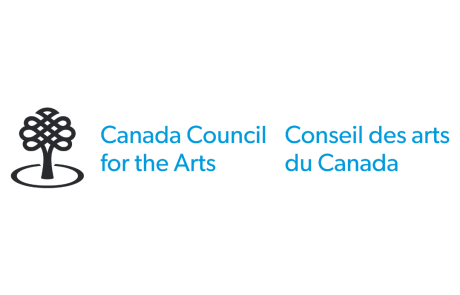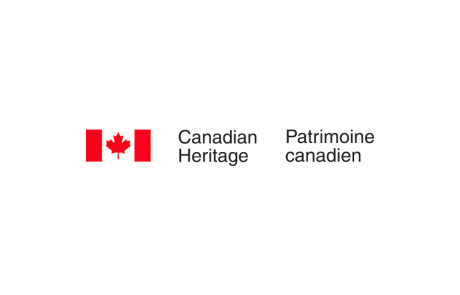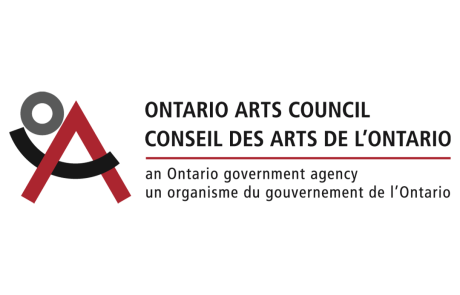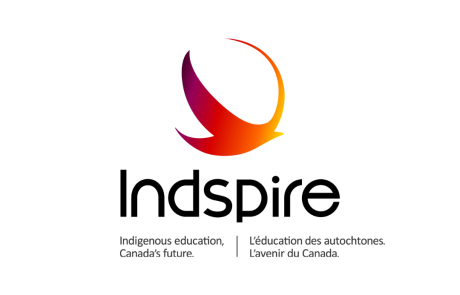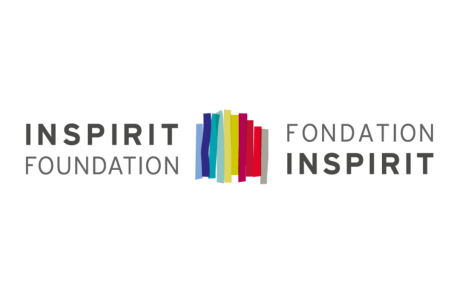Aboriginal Words and Arts Practices in Quebec Today
By France Trepanier
Lisez ici les pratiques artistiques et verbales autochtones au Québec aujourd’hui en anglais.
An event organized by the First Nations Circle at L’Université du Québec à Montréal (UQAM) November 20-22, 2008
Translated from French by Chris Creighton-Kelly and France Trépanier.
Wôlinak, Kitcisakik, Kitigan Zibi, Manawan, Wemotaci, Ouje-Bougoumou, Wendake, Mashteuiatsh, Listuguj, Kahnawake, Kawawachi Kamach, Inukjuak, Salluit are words carrying the sounds of ancestral languages – Innu, Inuit, Algonkins, Attikamekw, Micmac, Cree, Huron-Wendat, Abénaki, Mohawk.
These are names of places, of territories inhabited by First Peoples, by their descendants and by artists who tenuously keep afloat cultural practices which are essential to the expression of Aboriginal realities and to the transmission of knowledge to future generations.
The conference Aboriginal Words and Arts Practices in Quebec Today was held to bring these realities into focus. The event was presented by the First Nations Circle at University of Quebec in Montreal (UQAM), the Inter-University Centre for the Study of Arts, Literature and Traditions (CELAT-UQAM), in collaboration with Lands InSight.(1)
Over three days, this conference offered an academic colloquium as well as public meetings during which francophone Aboriginal artists from Quebec were invited to talk about their creative process, their artworks and the meaning of their art practices.
When I first received the conference program, I was impressed by the line-up of speakers. From the perspective of Vancouver Island, where I live, I dreamt about the trip that would allow me, for a few days, to be in the company of friends, colleagues and artists whose work and tenacity I admire. I thought about the Quebecois and Canadian cultural landscape and the space occupied by senior visual artists such as Rita Letendre and Pierre Sioui. I thought about the powerful works of Abenaki filmmaker Alanis Obomsawin, of Innu musician Florent Vollant, of Huron-Wendat playwright Yves Sioui-Durand. And I thought of emerging artists such as Algonquin rapper Samian.
I realize that despite the vitality and the relevance of the work of these artists, the opportunities for discussion, conferences, colloquia, round tables are scarce. Even more rare is when the opportunity to speak is given to Aboriginal creators themselves.
Who speaks in whose name? That is a topical question. In Quebec, it is often non-natives who express themselves about the Aboriginal world. Of course, this phenomenon is not unique to Quebec. But it seems that in Quebec, more than in English Canada, Aboriginal voices are completely absent from the public discourse, the media, the institutions and even from consultation commissions. (2)
Yet, when it comes to the question of speaking, one has to be very careful. The dividing line between appropriation of Aboriginal voice and strategic alliances can be very tenuous.
Certainly, we can reflect on the efforts of public figures such as Serge Bouchard, Richard Desjardins, Chloée Ste-Marie or Richard Séguin who contribute to making the Aboriginal realities better understood by Quebecers. Efforts to bring people together are welcomed and Laure Morali, through a collection of texts, is building bridges between Aboriginal and Quebecois authors.
“We could lay down a few words, carefully chosen, at each others’ doors to signify our mutual respect, and to counter the silence that solicits the dark shadows of our imagination”(3)
Still through all these evocations, all these encounters, we have to ensure that this mutual respect is based on honouring history, by taking into account the social and economic realities of Aboriginal communities and, more importantly, by understanding that power relationships continue to exist.
So I was delighted by the fact that the UQAMs’ academic colloquium encourage Aboriginal voices to be heard. As well, it was an ideal stage for PhD students and professors to present the results of their research on topics as diverse as the hyper-media writing practices of the Inuit in Nunavut; the Manitou College and its influence on contemporary Aboriginal artists; or the symbolism of collective links among Aboriginal artists in Quebec.
Imbued with an academic aura given the university context, nevertheless, the event brought together important Aboriginal artists from Quebec at a series of thematic roundtables.

‘Hidden in Plain Sight’(4) is the title of a book about the contributions of Aboriginal peoples to Canadian identity and culture. And this title also describes quite accurately a phenomenon in the francophone Aboriginal world which manifests itself in various forms.
In the past years, I have had the privilege to work with Aboriginal artists from many nations. I have observed that too often Aboriginal artists from Quebec find themselves in the margin of the margins.
• They are absent from Canadian artistic life. You just have to open any Canadian art history book, past or contemporary, to observe these omissions.
• They are invisible in mainstream Quebecois culture. But there is no correlation between this invisibility and the excellence of their practices.
• Francophone Aboriginal artists are still seriously under-represented within the Aboriginal arts community in Canada as a whole.
The two ‘great solitudes’ of Canada exist in the Aboriginal world. Huron-Wendat curator Guy Sioui-Durand also speaks of, “…the need to better link Aboriginal imagination, from East to South, in all its complexity.”(5) I would add the importance of links between North and South to recreate, with its four directions, the powerful healing of the medicine wheel as metaphor.
In the past decades, for historical, political, cultural and economic reasons, Aboriginal artists in Quebec were not always permitted to assume their rightful place in the many affirmations and recognitions that have influenced the retaking of voice by Aboriginal artists in English Canada.
I have often astonished my colleagues, both Anglophones as well as Francophones, by mentioning that there are 11 Aboriginal nations in which the French language is spoken. They are located in Quebec, Manitoba, New Brunswick, Ontario, Nunavut, and Labrador.(6)
Still struggling with the detrimental impact of anthropological perspectives, Aboriginal francophone artists demand the respect and the promotion of traditional knowledge along with their contemporary art practices. In Quebec, Aboriginal arts are often more considered for their economic, touristic potential than for their intrinsic aesthetic values within the Canadian and international art worlds.
Those who appreciate Aboriginal arts know that it is the contemporary artists who, by their artworks, allow us to collectively deconstruct biaises and stereotypes. They reveal the strength of ancestral traditions while locating their practices in the current art world.
It is precisely this kind of work that Yves Sioui-Durand, Catherine Joncas and John Blondin undertook in 1985 when they created Ondinnok, the only professional Aboriginal theatre company in Quebec. The mission of the company is to create ‘an Aboriginal mythological theatre’ which integrates Indigenous tradition with contemporary theatricality.
A public discussion, facilitated by Louis-Karl Picard-Sioui, focussed on the theatre of Ondinnok in the presence of Sioui-Durand and Joncas. I found the audio-visual retrospective which presented the work of the company over the past two decades, particularly revealing. First, there was the strength and the rigour of the pieces. Then, as extracts of past productions were shown, from Le Porteur des Peines du Monde (1985-1995) to Hamlet le Malécite (2004), it was like witnessing, in fast motion, the over-the-passage-of-time creation of a powerful and singular dramaturgy.
Next we talked about language, literature and poetry. Gathered around the table were Joséphine Bacon, Innu filmmaker and author from Betsiamites; Rita Mestokosho, Innu poet from Ekusnitshit; and Jean Sioui, Huron-Wendat poet and teacher from Wendake. Together they discussed the state of Aboriginal literature in Quebec. References were made to the publishing house Le Loup de Gouttière and to the first francophone Forum on Aboriginal literature that brought together, in Wendake last September, senior authors such as George Sioui, Michel Noël, Tomson Highway and Sylvie-Anne Sioui-Trudel.

A third round-table was composed of filmmakers Alanis Obomsawin, André Dudemaine and Rachel Alouki-Labbé. They explored specific aspects of Aboriginal filmmaking in Quebec and the impact on communities. For example, André Dudemaine spoke about the ‘coureur des bois’ (runner of the woods) as an allegorical figure in Aboriginal cinema.(7) As was referred to in Coureurs de nuit, a film by Shanouk Newashish, “Our ancestors were runners of the woods, we are runners of the night. “
Using her legendary story-telling skills, Alanis Obomsawin gave a vibrant testimony that recounted some of the difficult moments during the shooting of ‘Kanehsatake – 270 Years of Resistance’. This film was made during the Oka crisis of 1990. The panelists spoke about the negative impact that the Oka crisis has had on the development and funding of Aboriginal arts in Quebec. In the late eighties, Aboriginal arts organizations were just starting to gain recognition and support from the Ministry of Culture. However, after Oka, funding became scarce and in some cases non-existent.
To this day, there are no dedicated funding programs for Aboriginal arts at the Conseil des Arts et des Lettres du Quebec.
Furthermore, even though the Aboriginal Arts Office at the Canada Council for the Arts has been in existence since the ‘90s with Aboriginal officers present in every disciplinary section, the Council still does not have even one Francophone Aboriginal officer.
In another round table about cinema, Quebecois film director Manon Barbeau, Attikamekw director and cameraman Shanouk Newashish and two Anishnabe filmmakers from Kitcisakik, Evelyne and Kevin Papatie, discussed the Wapikoni mobile.(8)
The Wapikoni mobile is a traveling video and music studio for youth in Aboriginal communities within Quebec. With the support of the National Film Board and many other partners, the Wapikoni mobile is equipped with three cameras, two editing suites and one music recording studio. It also has a projector which allows for screenings in the communities at every stop. In 2008, the Wapikoni mobile made 17 of these stops.
The young creators from the Wapikoni mobile have received 24 prizes at national and international festivals. Recently, the film L’amendement by director Kevin Papatie won two awards. The first was at the ImagineNative Festival in Toronto and the second at Festival Filmer à Tout Prix, in Brussels.
The participants explored the future possible developments of the Wapikoni mobile, but they also stressed the importance of permanent production infrastructures in communities.
This absence of infrastructure is also noticeable in other artistic disciplines.(9) The creation, production, presentation and appreciation of art rely on infrastructure, both tangible and intangible. This infrastructure functions as a complex system which supports the continuum of activity in the arts: training, creation, production, curation, administration, distribution and arts appreciation. Yet, in the Aboriginal francophone communities, there are no art service organizations, no artist-run centres, no theatre halls, no publishing houses and no touring networks. It is also difficult to find publications, prizes, critical discourse or an Aboriginal presence in the media, in collections, in archives, in research. All of these elements validate artistic practices in the mainstream.
The roundtable on the visual arts focused on the work of Sylvie Paré and Sonia Robertson, as well as on a recent project of curator Guy-Sioui-Durand. Mohawk dancer and choreographer Gaétan Gingras also took part to the conversation.
The work of Sylvie Paré moves me. Metis/Huron-Wendat artist and museographer of the First Nations Garden at the Montreal Botanical Garden, she creates installations that breathe new life into her Huron heritage. She provides a new context for historical objects that have been symbols of dispossession. Her installation La fête des morts(10) and Conservation des espèces (11) are particularly representational of this approach.
Looking at Sonia Robertson’s work is like lifting the corner of a veil to catch a glimpse of – in the space of an instant – the light of other worlds. I like the movement, the traces that she leaves as signs inviting us to construct, or reconstruct, history. Coming to installation and performance art through photography, Ilnue(12) artist Robertson favors in situ and ephemeral work. Aboriginal spirituality and nature is at the heart of her creations.
In collaboration with Domingo Cisnéros, she recently created Wampum, an outdoor installation, for the 400th-anniversary celebrations of Quebec city. In this piece, the wampum takes the shape of an ephemeral garden “to symbolize the reservations where we have been exiled, the place where we have been smothered, like ‘species’, driven to extinction and ‘weeds’, ineradicable, always springing back up.” (13)
Last summer, at the 400th anniversary of Quebec, art critic and curator Guy Sioui-Durand was the artistic director of one of the cultural components – Meetings with First Nations. With his usual verve and flight of fancy, Sioui-Durand presented a synopsis of the many artistic projects undertaken for the occasion. He noted the many artworks, especially the exhibition Tehariolin: Zacharie Vincent and friends, that punctuated the multidisciplinary program, which was seen by thousands of visitors.
The organizers of the conference Aboriginal Words and Arts Practices in Quebec Today promised, “to nurture a critical reflection on Aboriginal arts and the issues that connect to them”. In my mind, they rose to the challenge. Their event created an opportunity to witness the vitality and blossoming of Aboriginal artists.
I left Montreal, my head filled with conversations, images, ideas and delighted with both reuniting and encountering for the first time.
In my opinion, it is essential that this experience be repeated and developed. We need more opportunities that give a Francophone voice to Aboriginal artists. The circle must widen to ensure that these artists can occupy their rightful place in the Aboriginal cultural landscape here at home, as well as in the national and international contemporary art world.
And I continue to hope that the time of invisibility is almost over.
France Trépanier is a visual artist, researcher and consultant of Mohawk and French ancestry. Born in the Outaouais, she currently lives on Vancouver Island, British-Columbia.
1. See http://cpn.uqam.ca/ & http://www.nativelynx.qc.ca/ & http://www.celat.ulaval.ca/
2. A remarkably small number of Aboriginal people took part in the Consultation Commission on Accommodation Practices Related to Cultural Differences that took place in Quebec last year.
3. Free translation of an excerpt from the book Aimititau! Parlons-nous by Laure Morali, Éditions Mémoire d’encrier, 2008.
4. Beavon, Dave, Newhouse, David R., Voyageur, Cora J. Hidden in Plain Sight: Contributions of Aboriginal Peoples to Canadian Identity and Culture, University of Toronto Press, 2005
5. Sioui-Durand, Guy, AK8A – ENTON8HI of Saliva and Quill, tranlated par Jane C. Lamb-Ruiz in Making a Noise! under the direction of Lee-Ann Martin, Banff Press, 2004.
6. These communities are characterized by a great linguistic, cultural, social and economic diversity. Their connection to the French language and the ‘Francophonie’ is also quite diversified. In some communities, like the Huron-Wendat or the Abenakis, French has become a first language. For the Micmacs, the Malecites, the Attikamekw and the Innus, French is spoken as a second language, although the transmission of ancestral languages sometimes represents a challenge. In other communities, like the Mohawk, the Inuit and the Crees, French is a third language after ancestral languages and English.
For more information on Aboriginal nation in French Canada, see the Report of the Conference Diversité Francophonie by France Trépanier.
7. It is the topic of his next article to be published in 24 Images, a quebécois magazine.
8. For more information on the Wapikoni mobile see www.onf.ca/wapikonimobile
9. The question of infrastructure for Aboriginal arts is discussed in Report from consultations, Aboriginal Arts Research Initiative, by France Trépanier, Canada Council for the Arts.
10. The Celebration of the Deads
12. The term ‘Ilnu’ refers to the community sometimes still called ‘Montagnais’. The term ‘Innu’ is used on the North shore of Quebec while ‘Ilnu’ designates more precisely the community of Mashteuiatsh (St-Jean’s Lake).
13. See the text of Domingo Cisnéroa and Sonia Robertson at http://monquebec2008.sympatico.msn.ca/MonQuebec2008/

France Trépanier is a visual artist, curator and researcher of Kanien’kéha:ka and French ancestry. Her practice is informed by strategies of collaboration.
France was recently selected, by the Canada Council for the Arts, to be part of the Indigenous Curators Exchange in Australia, New Zealand and the 2017 Venice Biennale.
She is the Aboriginal Curator at Open Space Arts Society in Victoria BC, where she recently curated the Awakening Memory Project with artists Sonny Assu, LessLIE and Marianne Nicolson.
France was the co-recipient of the 2012 Audain Aboriginal Curatorial Fellowship by the Art Gallery of Greater Victoria.
She co-authored with Chris Creighton-Kelly Understanding Aboriginal Art in Canada Today: a Knowledge and Literature Review for the Canada Council for the Arts.
Her essays and articles have been published in numerous journals and magazines. France is co-chair of the Indigenous Program Council at the Banff Centre.


